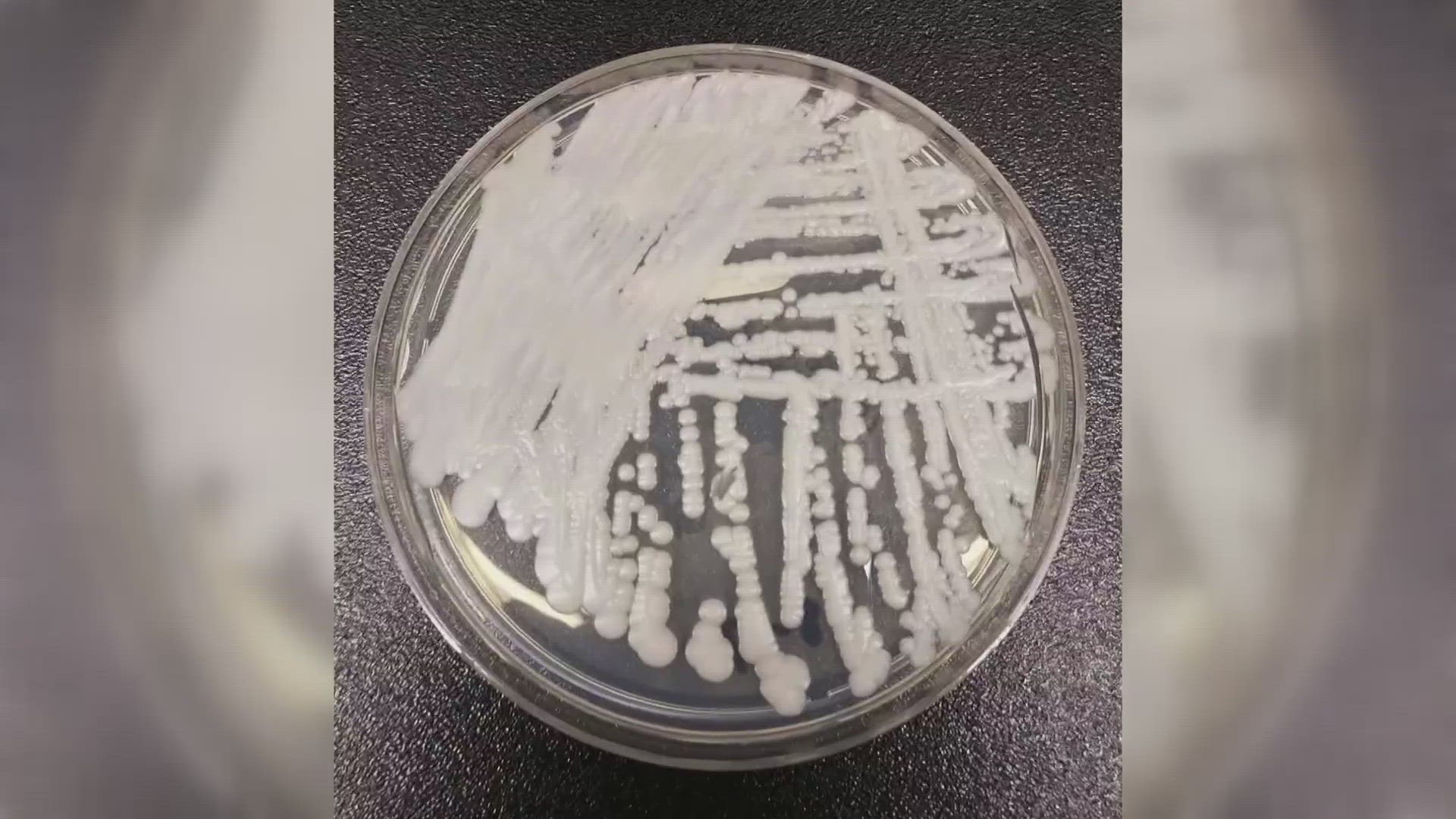SACRAMENTO, Calif. — A new fungus impacting medical facilities is raising people’s concerns of living in a zombie show. Experts say it’s not a threat to healthy people, but could be deadly to others.
Sonya Frausto owns Ten Acres Pharmacy in Sacramento and says medical professionals are seeing an “increased number of cases throughout the United States.”
Centers for Disease Control and Prevention researchers blame the COVID pandemic for the tripling in cases of the Candida auris fungus. Officials issued a health advisory notifying healthcare providers of current trends and recommendations last month.
A report says hospital workers were strained by COVID patients and likely shifted their focus away from disinfecting from other kinds of germs.
The California Department of Public Health says the fungus is a multi-drug resistant yeast that can spread in healthcare settings through person-to-person contact or contaminated surfaces and causes serious, hard-to-treat infections.
“Patients who are more at risk for this are definitely patients who have diabetes, a suppressed immune system, have just had surgery, or there's any tubes or apparatuses that patients are using that allow the bacteria to get into the body,” said Frausto.
Feeding tubes and breathing apparatuses, like c-pap machines, can bring bacteria or fungus into a person's bloodstream.
“Once this fungus gets into our bloodstream, that's where it's really, really difficult for us to be able to treat,” said Frausto.
While the fungus is not a threat to healthy people, the CDC recommends anyone visiting a patient be sure to have good hygiene by washing their hands, body and clothes to help avoid spread.
Michael Vollmer, Infectious Disease Specialist and Regional Epidemiologist for Kaiser Permanente, sent ABC10 the following statement:
“The Infection control program in Kaiser Permanente Northern California has been aware of the C. auris issue in California since 2021 and is working with the California Department of Public Health on strategies for prevention within Kaiser Permanente.
In general, the CDC emphasizes that C. auris is not a threat to healthy people. The organisms can be dangerous particularly to those that are very sick with other illnesses or have long or frequent stays in health care facilities. The prevention effort within health care is part of a wider strategy against multi-drug resistant organisms (MDROs) and includes reemphasis on routine practices and processes within the hospitals and clinics to prevent transmission of infectious organisms, such as frequent hand washing and use of approved cleaning agents that kill the organism on contact.
CDPH is aware of the rising number of cases of Candida auris detected across the state, and is working closely with local health departments to monitor and track cases. CDPH has provided guidance and resources to local health departments and health care facilities and the CDPH Healthcare-Associated Infections (HAI) program provides consultation to local health departments regarding cases and outbreaks of C. auris in healthcare settings.”
CDPH gave the following resources for those interested in learning more:
- CDPH provides a C. auris Information for Families and Patients page
- CDC provides the most recent case counts for each state on their Tracking Candida website.
- Since September 2022, C. auris has been a reportable condition in California, which means that laboratories and providers are required to report all C. auris results to their local health departments and CDPH.



















